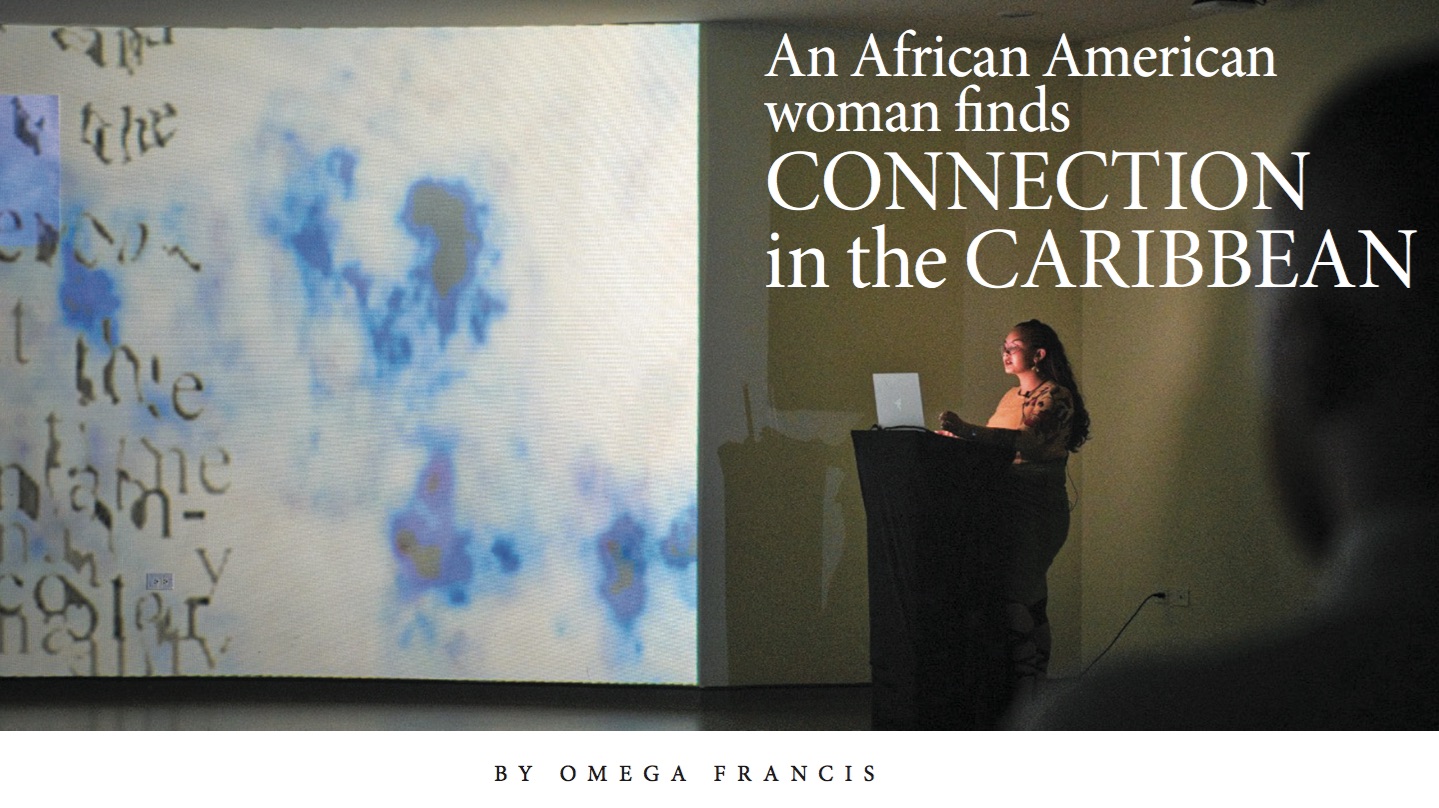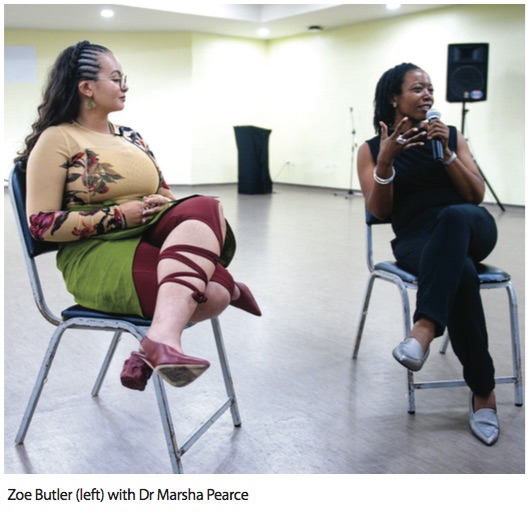
At the heart of Zoe Butler’s work as a new media performance artist is connection. Connection to history, connection to her father, connection to the beating heart of a culture and their collective consciousness.
Her recent presentation, “Conversations and Constellations: A Performative Reading and Film Screening", held on May 8 at the Department of Creative and Festival Arts (DCFA), was a way for Zoe to tell her story as an African American woman who is making it her life’s work to study and speak about the “jumbie” stories of the Caribbean.
“Conversations and Constellations” was an intentional way for others to get to know her and hear her reinterpretation of jumbie stories and their relationship with history.
Folktales, and jumbie stories, like people, exist in many forms. For Zoe, these stories help to communicate her own philosophy through the creative and visual experience. Her study is a historical project that situates materials and stories through lifetimes, regions, and cultures, and help encourage those who engage with them to find connection to the past.
Her own connection to the past resides in the stories of her father, whose ancestral ties lead to Guyana, and the jumbie stories Zoe heard from her family who brought those stories to the United States when they migrated. Graduating from the School of Art Institute in Chicago in 2021, Zoe set her sights on the Fullbright programme, and while she did not set her sights squarely on Trinidad and Tobago at first, she knew that she wanted her research to be somewhere in the Caribbean. With the apparent overlap in cultural belief with regards to jumbie stories, T&T was the perfect choice.

In Trinidad, she was met by people who have supported her on her journey, a feeling she received from the moment she met Dr Marsha Pearce (Lecturer in Visual Arts and Deputy Dean for Distance and Outreach at the Faculty of Humanities and Education), her mentor at the DCFA.
Since she was 18 years’ old, she has been engaging with the archival material that her father left behind. Her practice as a new media performance artist is driven by the relationship between images, objects, and technology, a work that was inspired by her need to make space in her life for her late father
“Jumbie stories have this quality where they are crafted each time they are told, and I think that kind of care is something that reminded me of my father’s stories. Paralleling these stories was a way of putting my father’s life into historical context and into a lineage of Caribbean oral tradition that adds dimension to his creative practice as a rapper and artist.”
While she experimented with engaging with her father’s archives during her undergraduate programme, it was not something she was forthcoming about with her peers because she felt that his life was a sacred thing. She had a responsibility to protect him.
However, the investigation of his works led her to realise that she had to take care in her approach. Attending the Art Institute, which has a predominantly white student body, she needed to be cautious in how she looked at his work and how she looked the jumbie stories.
“The careful eyes that I needed to mentor, look over the work I wanted to do, and help me interpret the material came with a very specific kind of consciousness. I gravitated towards African Americans and black persons who were specialised in interpreting black creative life.”
With this new care, a question came up about blackness and the term ‘black bodies’. The narratives surrounding blackness in the United States have always been more limiting than black life itself. “Black folks are living lives that are so much more abundant than the narratives that are being told, and that felt very true for my dad as well.”
In her recent work, she offered an expansion of this term by relating it to the cosmic microwave background, the oldest light in the universe and a light that is nonvisible. As she says in her presentation, she has always experienced her father as an invisible presence, and she felt this metaphor relevant to how she linked her work to his history. “It’s not just a light that is the black body, it is the entire spectrum of light.” Through her research, Zoe has developed a more thorough historical understanding of her environment. She feels as if she is in a better position to communicate the stories with care, and it feels important to her that the right audience receives it.
At the end of the ten-month research period, when she goes back to the US, Zoe has big plans to present her research in Chicago and Charleston as she continues to explore the distinct connections between the American South and the Caribbean. This is just the beginning of her story.